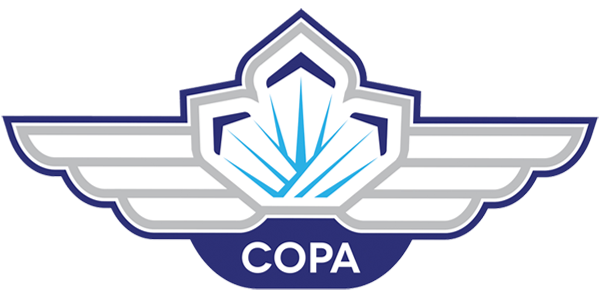February 24, 2022
NAV CANADA’s ADS-B “Mandate”?
Jon Robinson
— By Jim Ferrier, Director, Aviation Operations, COPA
NAV CANADA has now published its Mandate requiring ADS-B Out equipage for Canadian airspace. Requirements in Class A and B airspace are identified to start February 23, 2023, and no sooner than February 23, 2026, in Class C, D and E airspace.
Over the next weeks, COPA will publish a series of articles that will highlight concerns with the proposed implementation of the NAV CANADA mandate of ADS-B. These legitimate concerns have not been addressed, at least not publicly, by the air navigation service provider, NAV CANADA, and the regulator, Transport Canada.
Doesn’t the verdict come at the end of a trial?
Is a Mandate really a Regulation and Whose Authority is it?
NAV CANADA represents this Mandate as being issued on behalf of Canada for users of Canadian Airspace. Aeronautical Information Circular 2/22: “Notice of Automatic Dependent Surveillance-Broadcast Out Performance Requirements Mandate in Canadian domestic Airspace” states:
“Beginning 23 February 2023, Canada will commence an automatic dependent surveillance-broadcast out (ADS-B out) performance requirements mandate for applicable Canadian Domestic Airspace (CDA).”
This statement raises the first concern: “What authority allows NAV CANADA to impose a mandate on behalf of the State?”
To begin to understand the question, one must look at the definition of Mandate. The definition, or any example of a mandate, is not included in the Aeronautics Act, Canadian Aviation Regulations (CARs) or Canadian Air Navigation Services Commercialization Act (CANSCA) so one must look to a dictionary.
NOUN: “An authoritative order or command”. VERB: “To require as by law; make mandatory”. (Webster’s New World College Dictionary, 4th Edition)
These definitions clearly describe something that holds authority or requirement based on law. Without a specific alternate definition of Mandate in Canadian aviation legislation, one can only assume this definition makes “Mandate” synonymous with “Regulation” if it holds legal authority. This then makes it difficult to understand how NAV CANADA can publish a Mandate and why Transport Canada is not making these changes through CARs or Standards?
The Aeronautics Act states the “Minister is responsible for the development and regulation of aeronautics and the supervision of all matters connected with aeronautics.” On the other hand, CANSCA allows “the Corporation may plan and manage airspace” yet specifically identifies “the Governor in Council’s right to make regulations respecting the classification and use of airspace.” In simpler terms, the legislation designates Transport Canada, and the State, has the authority to make regulation or legal requirements and NAV CANADA can plan and manage airspace.
Without clear authority then how can NAV CANADA’s mandate be legally enabled? How will NAV CANADA enforce compliance?
AIC 2/22 “states that the “..mandate will be enabled through airspace classification designation and amendment to transponder airspace requirements, as described in the Designated Airspace Handbook (DAH), TP 1820E.” This statement is interesting as it seems the intent is to amend existing transponder airspace requirements to include the addition of an ADS-B equipment requirement in the DAH and not to make actual regulatory change but instead do so by some sort of reference.
This approach to enablement is confusing as the DAH currently has no equipment definitions in its content and instead is a document defining the boundaries of different airspace and not operating requirements. How can the DAH be used to delegate regulatory authority to NAV CANADA to mandate specific equipment if it has never done so before? It seems even more strange to assign operational equipment requirements to the DAH when the precedent is that equipment requirements, related to airworthiness or operations, have always been defined by TC and included in CARs or associated Standards.
Based on the preceding observations it is difficult to understand how a mandate by NAV CANADA can be enabled or implemented instead of regulation by TC. Instead, it seems that significant change is intended to be implemented without TC needing to define requirements in CARs or Standards. This approach would also seemingly allow TC to avoid the need to follow legislated processes like CARAC or Gazette to make change (which can take more than two years)? This optic is disturbing as these legislated processes are meant to allow public comment on proposed changes and avoid arbitrary changes to regulation without consultation. Would the CARAC process not highlight in public record all user concerns, including operational and cost impacts of this mandate, that need to be considered? It also might identify a better implementation approach, that would minimize operational penalties and millions of dollars of costs to users across the industry.
After consideration, the original question remains “What authority allows NAV CANADA to impose a mandate on behalf of the State?” There does not seem to be any clear connection to regulation that provides legal authority for NAV CANADA to act on behalf of the state.
Representing the single largest group of Canadian airspace users, COPA reasons that the concerns raised and the questions identified in this article (more to come in subsequent articles) need to be addressed, answered and explained, publicly, before this “Mandate” can be imposed, in less than one year.
(Image : Aireon)
